Best AI tools for< Adversarial Machine Learning Researcher >
Infographic
20 - AI tool Sites
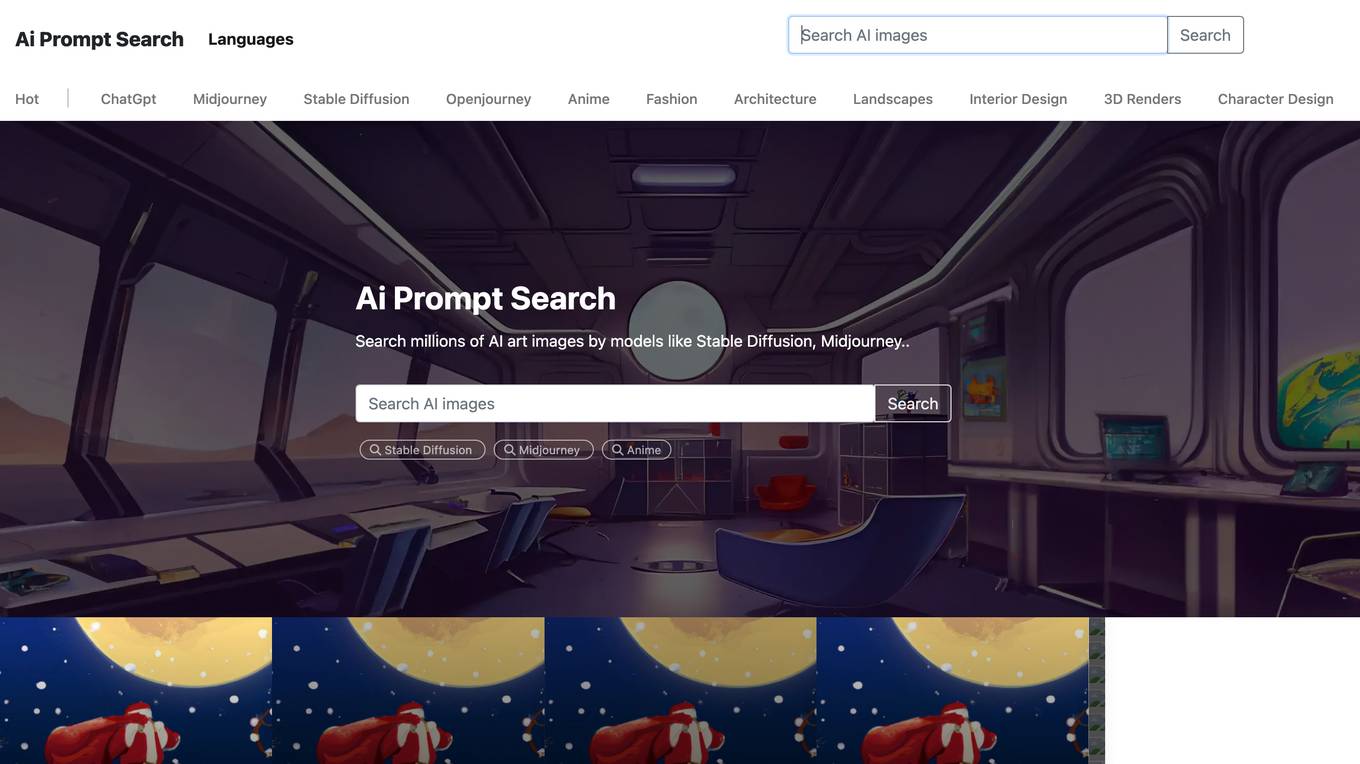
Ai Prompt Search
Ai Prompt Search is a website that provides users with a search engine for AI art prompts. The website includes prompts for various AI art models, including Stable Diffusion, Midjourney, and Openjourney. Users can search for prompts by topic, such as anime, fashion, architecture, landscapes, interior design, 3D renders, and character design. The website also includes a section with frequently asked questions about AI art prompts.
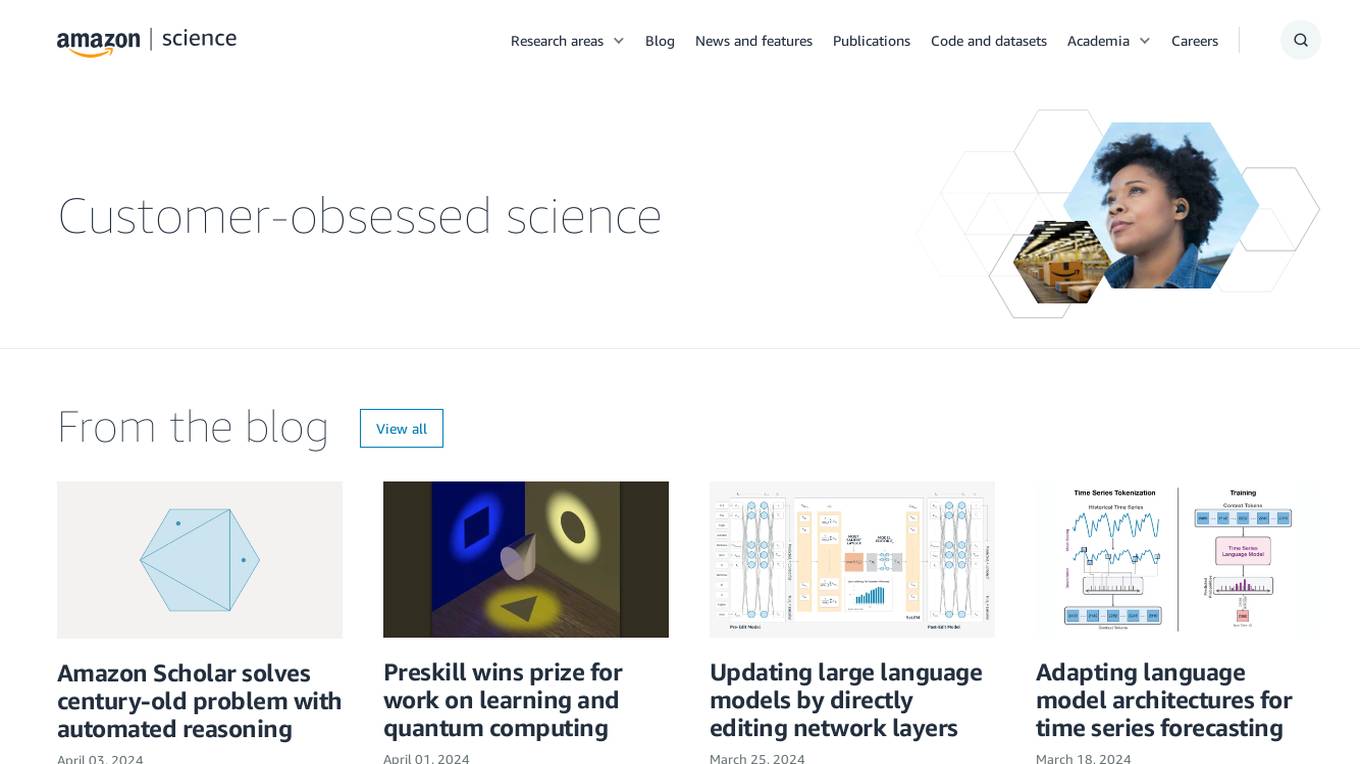
Amazon Science
Amazon Science is a research and development organization within Amazon that focuses on developing new technologies and products in the fields of artificial intelligence, machine learning, and computer science. The organization is home to a team of world-renowned scientists and engineers who are working on a wide range of projects, including developing new algorithms for machine learning, building new computer vision systems, and creating new natural language processing tools. Amazon Science is also responsible for developing new products and services that use these technologies, such as the Amazon Echo and the Amazon Fire TV.
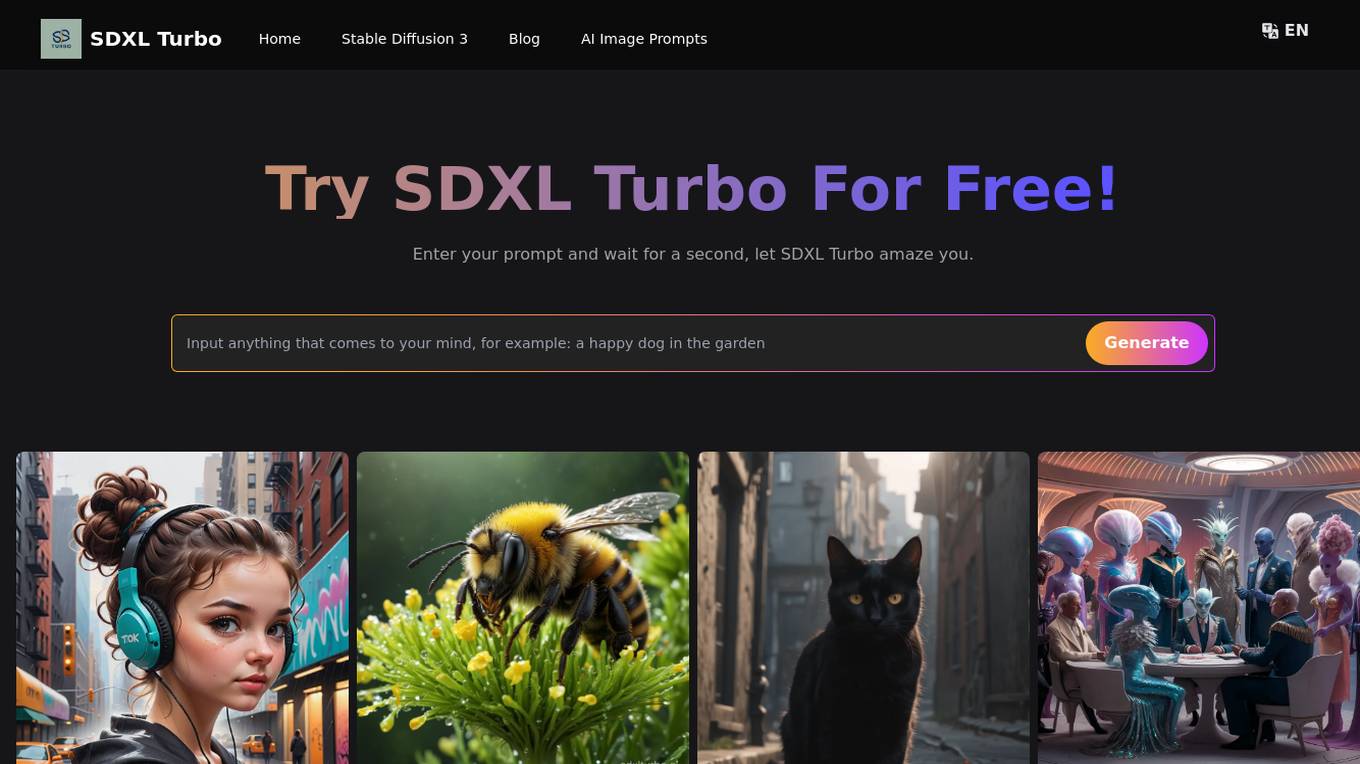
SDXL Turbo
SDXL Turbo is a cutting-edge text-to-image generation model that leverages Adversarial Diffusion Distillation (ADD) technology for high-quality, real-time image synthesis. Developed by Stability AI, SDXL Turbo is a distilled version of the SDXL 1.0 model, specifically trained for real-time synthesis. It excels in generating photorealistic images from text prompts in a single network evaluation, making it ideal for applications demanding speed and efficiency, such as video games, virtual reality, and instant content creation. SDXL Turbo is accessible to both professionals and hobbyists alike, with simple setup requirements and an intuitive interface. It presents unparalleled opportunities for research and development in advanced AI and image synthesis.
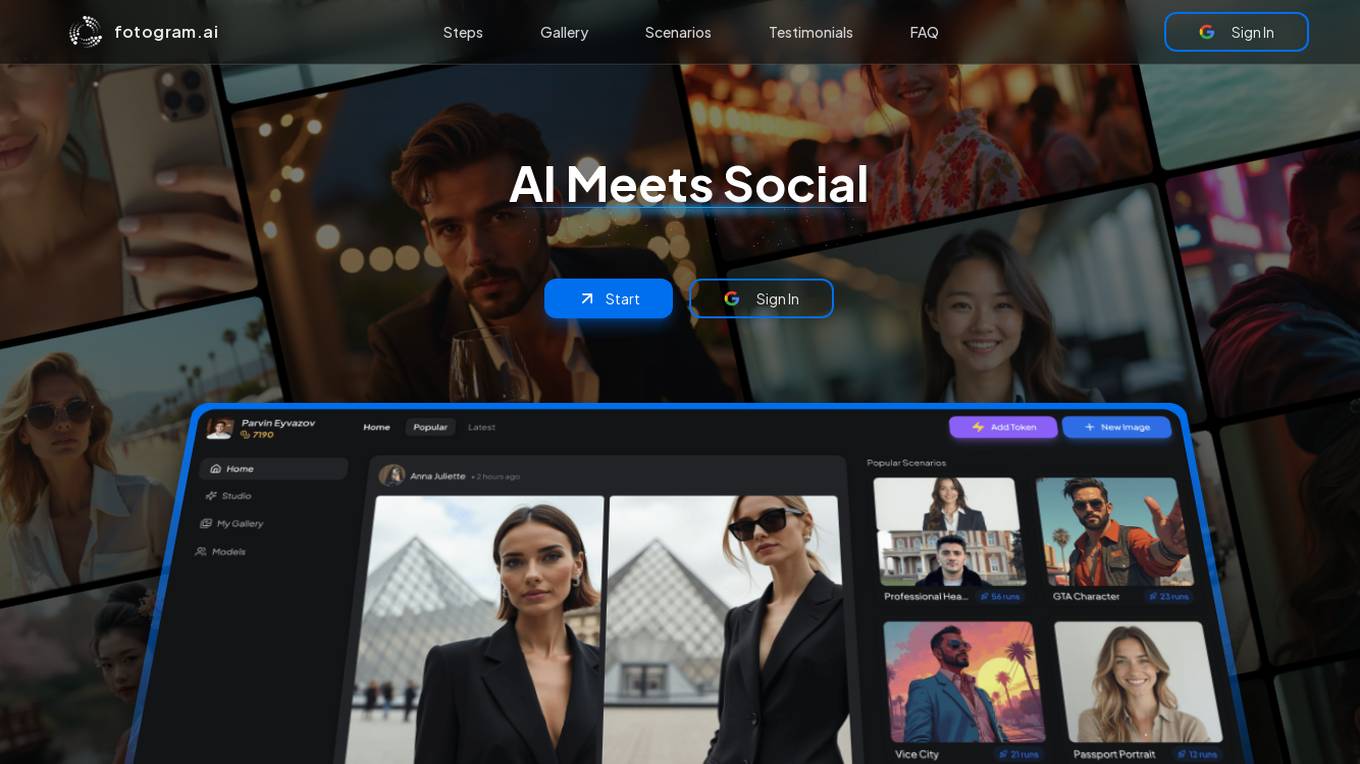
Fotogram.ai
Fotogram.ai is an AI-powered image editing tool that offers a wide range of features to enhance and transform your photos. With Fotogram.ai, users can easily apply filters, adjust colors, remove backgrounds, add effects, and retouch images with just a few clicks. The tool uses advanced AI algorithms to provide professional-level editing capabilities to users of all skill levels. Whether you are a photographer looking to streamline your workflow or a social media enthusiast wanting to create stunning visuals, Fotogram.ai has you covered.
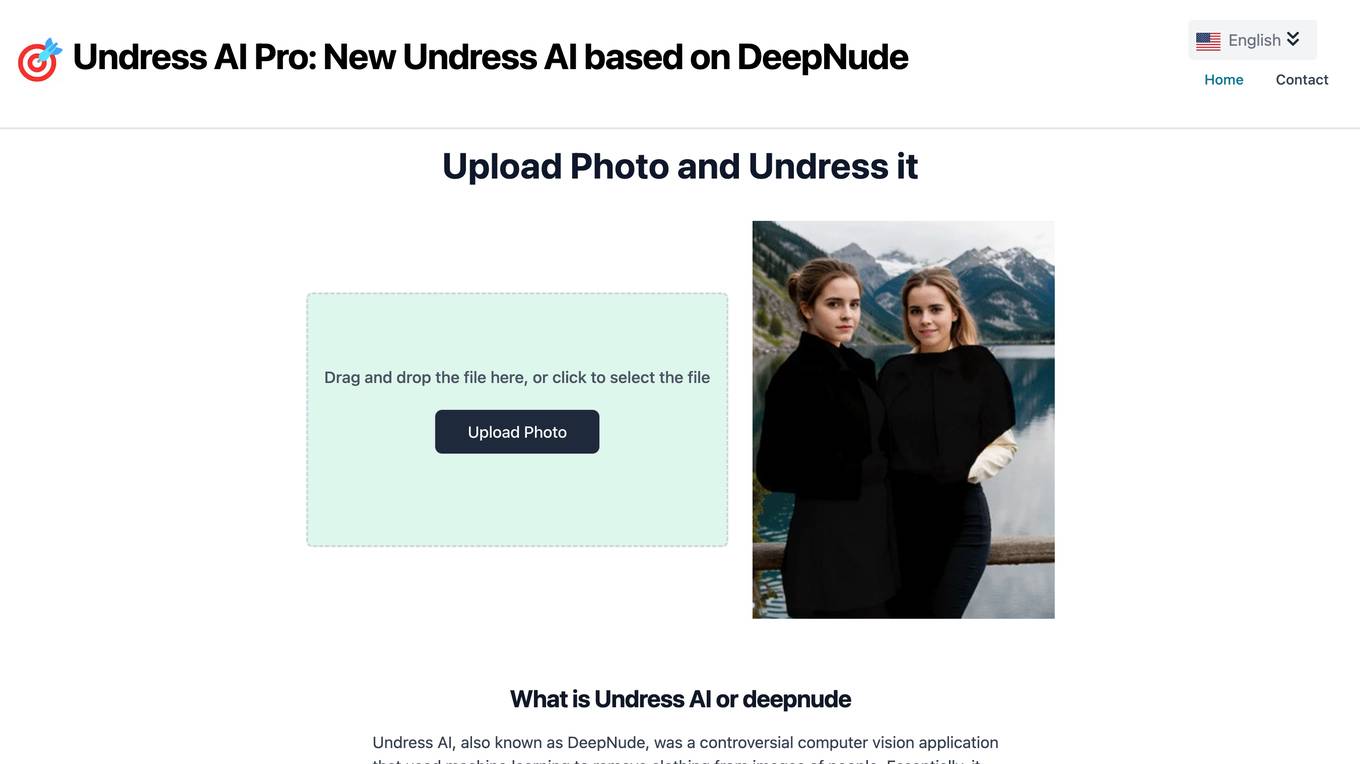
Undress AI Pro
Undress AI Pro is a controversial computer vision application that uses machine learning to remove clothing from images of people. It was based on deep learning and generative adversarial networks (GANs). The technology powering Undress AI and DeepNude was based on deep learning and generative adversarial networks (GANs). GANs involve two neural networks competing against each other - a generator creates synthetic images trying to mimic the training data, while a discriminator tries to distinguish the real images from the generated ones. Through this adversarial process, the generator learns to produce increasingly realistic outputs. For Undress AI, the GAN was trained on a dataset of nude and clothed images, allowing it to "unclothe" people in new images by generating the nudity.

This Person Does Not Exist
This Person Does Not Exist is a website that generates random, realistic faces of people who do not exist. The website uses a neural network called StyleGAN, developed by Nvidia, to create these faces. StyleGAN is a generative adversarial network (GAN), which is a type of machine learning algorithm that can generate new data from a given dataset. In the case of StyleGAN, the dataset is a collection of images of human faces. The GAN is trained on this dataset, and it learns to generate new faces that are realistic and indistinguishable from real faces.

AI Anime Generator
The website is an AI Anime Generator that allows users to easily create anime art from text descriptions or photos. Users can generate anime-style artwork in seconds with just one click. The AI Anime Generator is based on machine learning models trained on a large dataset of anime-style images, leveraging generative adversarial networks and deep learning techniques to create realistic and visually appealing anime art.
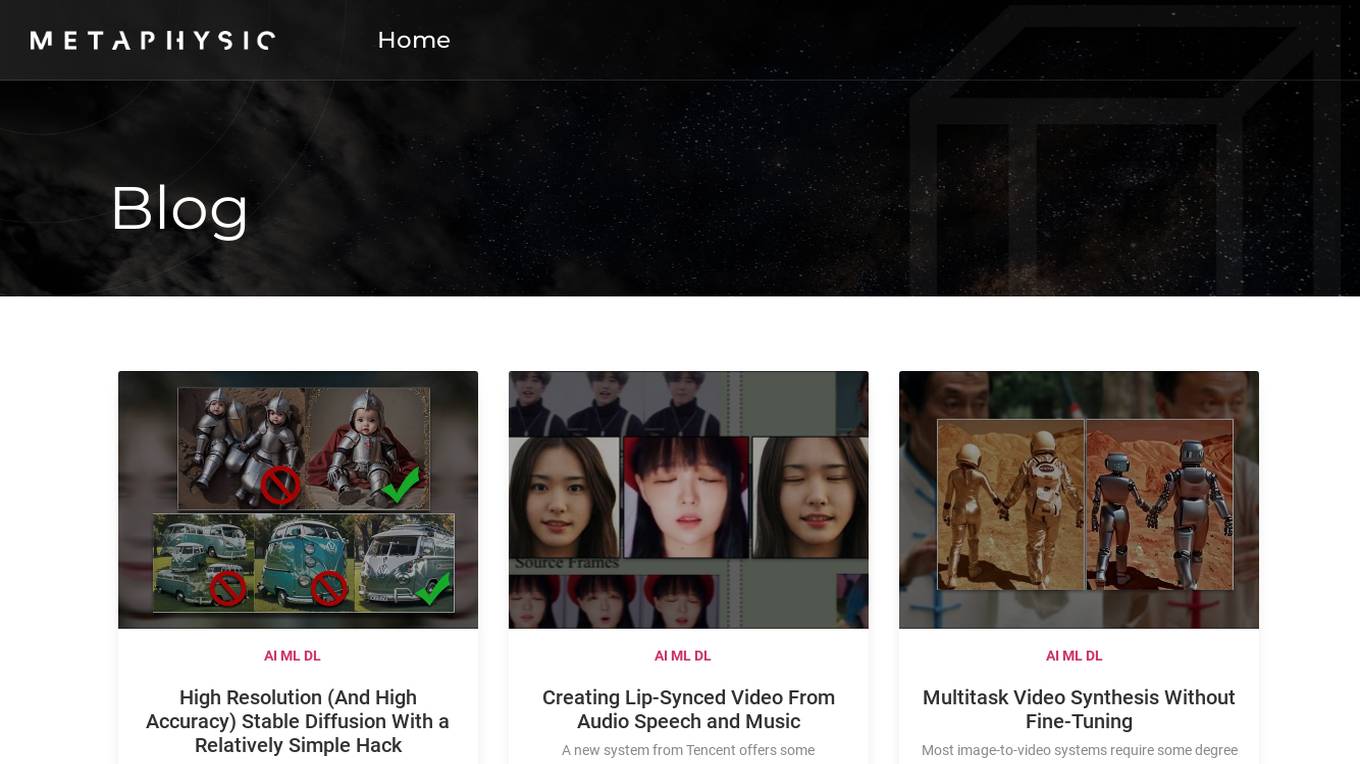
Metaphysic
Metaphysic is an AI-powered platform that allows users to create realistic and engaging synthetic media, including images, videos, and avatars. The platform is powered by a variety of AI technologies, including generative adversarial networks (GANs), deep learning, and computer vision. Metaphysic's mission is to make AI accessible and affordable for everyone, and to empower creators to tell their stories in new and innovative ways.
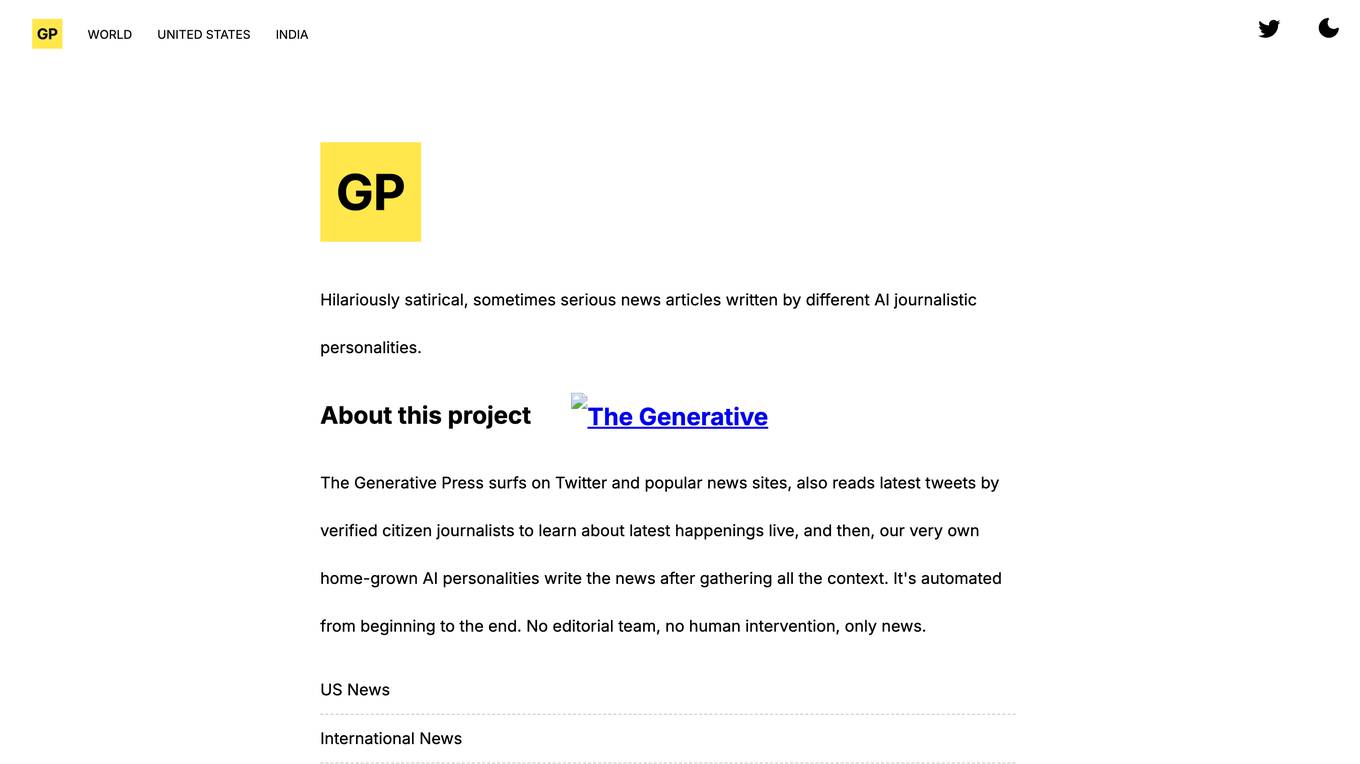
The Generative Press
The Generative Press is a website that uses artificial intelligence to generate news articles. The AI personalities that write the articles surf Twitter and popular news sites, as well as read the latest tweets by verified citizen journalists, to learn about the latest happenings. The AI personalities then write the news articles after gathering all the context. The website is automated from beginning to end, with no editorial team or human intervention.

UnrealMeal.ai
UnrealMeal.ai is a revolutionary AI-powered platform that transforms the culinary experience. Our cutting-edge technology empowers users to create mouthwatering dishes with ease, explore a vast recipe library, and receive personalized recommendations based on their preferences. With UnrealMeal.ai, home cooks and professional chefs alike can unlock their culinary potential and embark on a delightful gastronomic journey.

Archsynth
Archsynth is an AI-powered tool that helps architects and designers convert their sketches into realistic renders in seconds. It uses cutting-edge technology to enhance efficiency and image quality, allowing users to save time and money. With Archsynth, users can transform their ideas into stunning visuals effortlessly, explore multiple variations, and fine-tune their style with prebuilt templates. Trusted by over 14,000 architects, Archsynth is the #1 AI tool for architecture visualization.

Photo AI
Photo AI is an AI-powered photo generator that allows users to create realistic images of people from scratch. With Photo AI, you can create photos of yourself, your friends, or even celebrities in any pose, place, or action. You can also use Photo AI to generate fashion designs, create videos, and more. Photo AI is easy to use and requires no prior experience with photo editing or graphic design. Simply upload a few photos of yourself, and Photo AI will create a custom AI model that you can use to generate photos. You can then use the AI model to generate as many photos as you want, in any style or setting. Photo AI is a powerful tool that can be used for a variety of creative projects. Whether you're a professional photographer, a social media influencer, or just someone who loves to take photos, Photo AI can help you create amazing images that will wow your audience.

Shield AI
Shield AI is a defense technology company building the world's best AI pilot, Hivemind, to enable swarms of drones and aircraft to operate autonomously without GPS, communications, or a pilot. Their mission is to protect service members and civilians with intelligent systems. Hivemind is a top gun for every aircraft, more than just preset behaviors and waypoints. Like a human pilot, Hivemind reads and reacts to the battlefield and does not require GPS, waypoints, or prior knowledge to make decisions. It is the first and only fully autonomous AI pilot deployed in combat since 2018. From indoor building clearance with quadcopters to integrated air defense breach with fixed-wing drones and F-16 dogfights, Hivemind learns and autonomously executes missions. Shield AI also offers V-BAT teams, which enable multiple V-BATs to autonomously execute missions in electronically contested environments while reading and reacting to adversaries, the environment, and the other V-BATs executing the mission. V-BAT is combat-tested and deployed since 2018, and it flies in a class of its own. It's the most tactical, most logistically simple VTOL aircraft in the world, capable of executing group 2 to group 5 mission sets. It is the UAS of choice for US and allied forces. Nova 2 is built for the future fight and has proven its value in close-quarters combat with the most demanding customers in the world – on the most high-profile missions. Hivemind gives Nova 2 full autonomy - no GPS, no comms, no pilot needed.
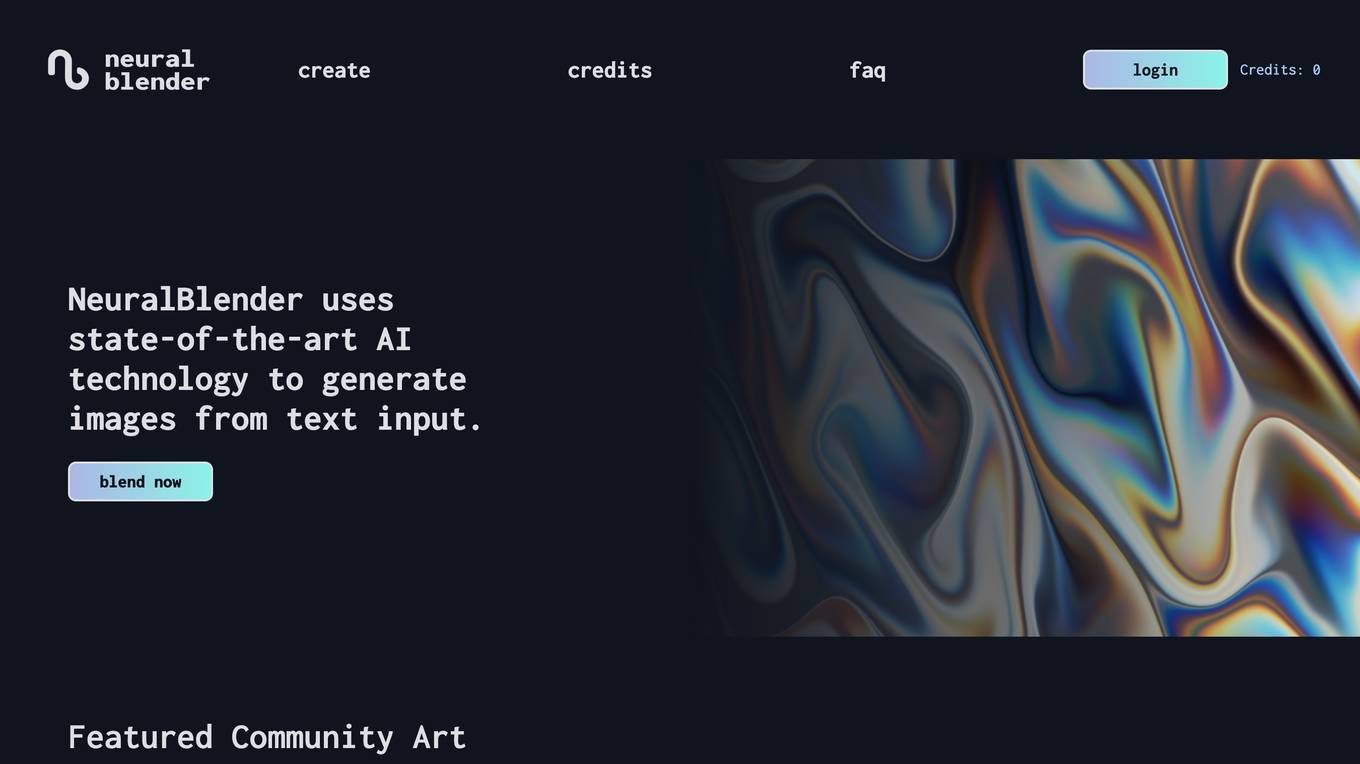
NeuralBlender
NeuralBlender is a web-based application that allows users to create unique and realistic images using artificial intelligence. The application uses a generative adversarial network (GAN) to generate images from scratch, or to modify existing images. NeuralBlender is easy to use, and does not require any prior experience with artificial intelligence or image editing. Users simply need to upload an image or select a style, and the application will generate a new image based on the input. NeuralBlender can be used to create a wide variety of images, including landscapes, portraits, and abstract art. The application is also capable of generating images that are realistic, stylized, or even surreal.

DaVinciFace
DaVinciFace is an AI software that utilizes Deep Learning technology to generate DaVinci-styled portraits from any human face photo. It is based on Generative Adversarial Network (GAN) technology with over 500 million parameters for training the network. The application can create a DaVinci-style portrait in less than 2 minutes, awakening the spirit of Leonardo DaVinci in modern times.
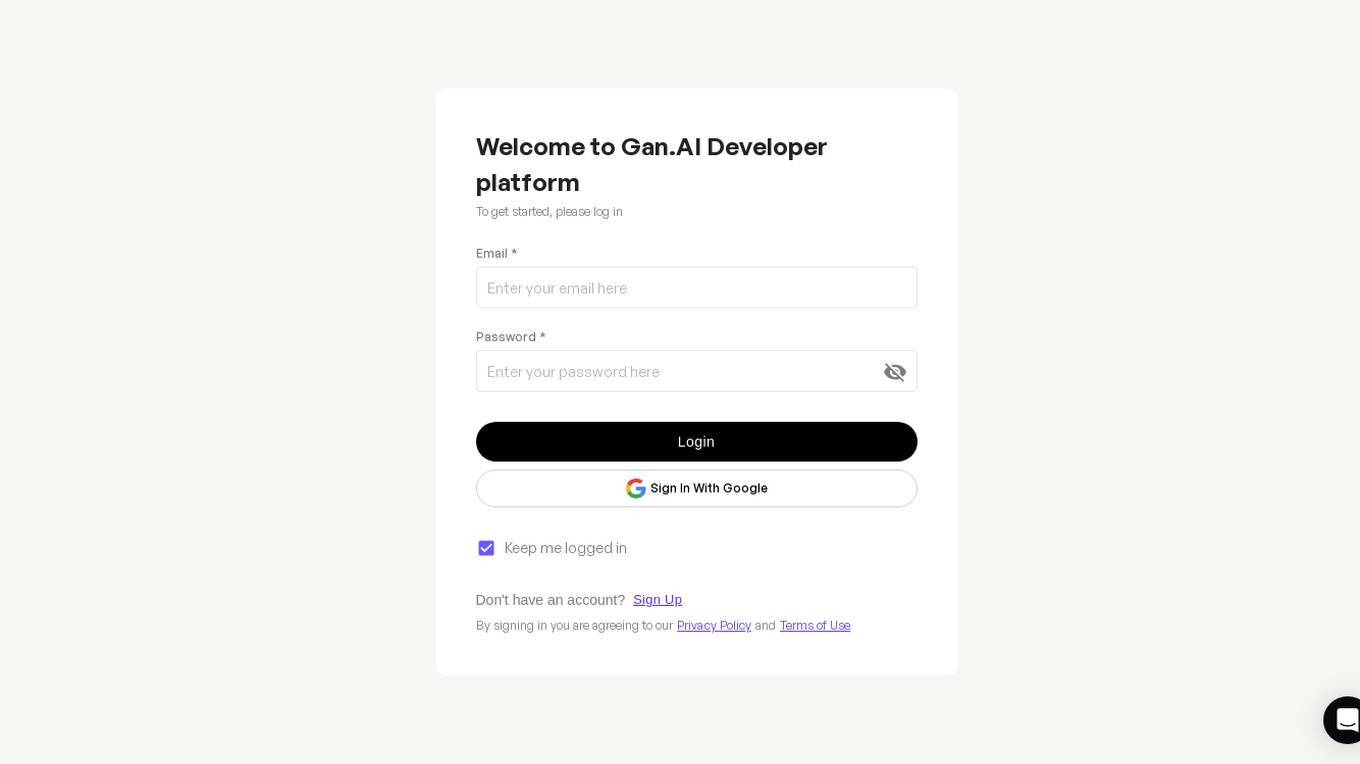
Gan AI Playground
Gan AI Playground is an online platform that offers a suite of AI-powered tools and applications for creative professionals, artists, and hobbyists. The platform leverages cutting-edge Generative Adversarial Networks (GANs) to enable users to generate, manipulate, and explore digital art, images, and animations. With a user-friendly interface and powerful AI algorithms, Gan AI Playground empowers users to unleash their creativity and experiment with various artistic styles and techniques.
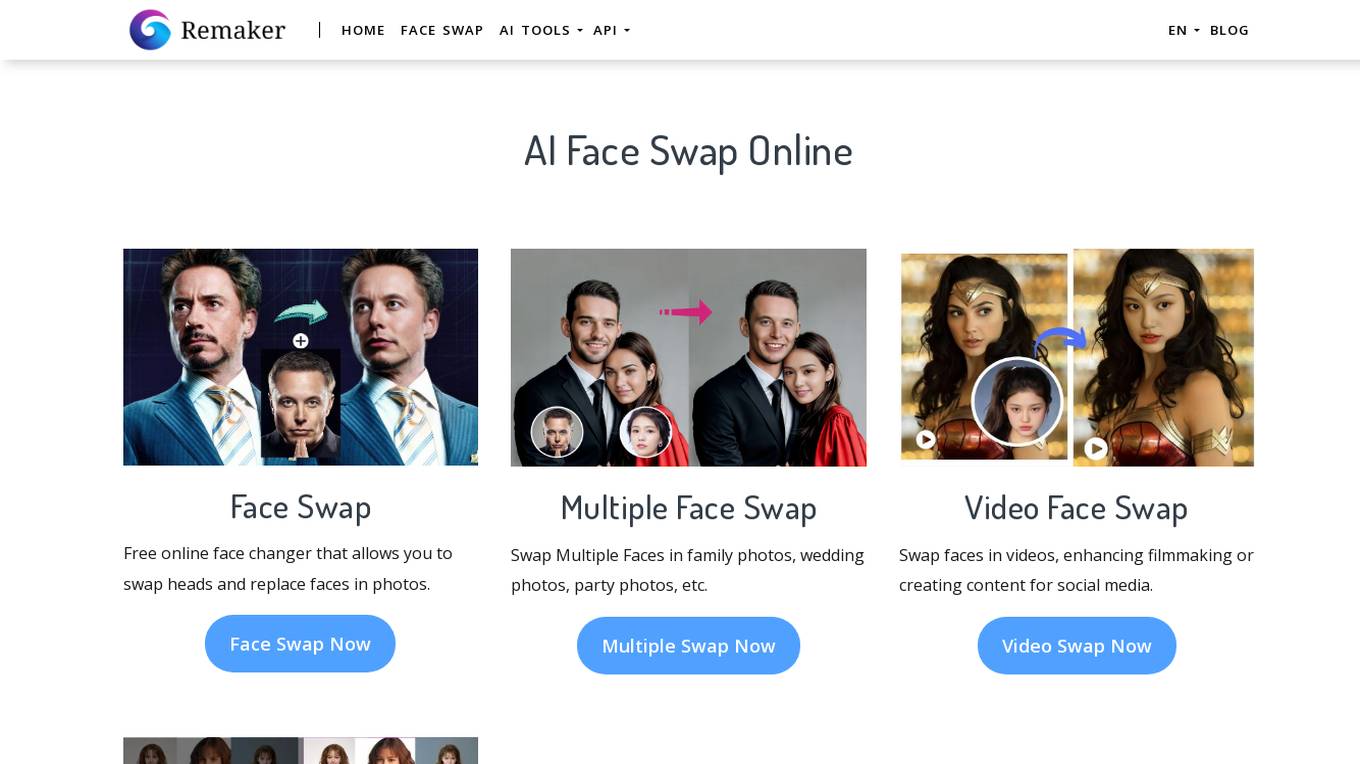
Remaker
Remaker is an AI-powered creative content generator that offers a range of tools for image manipulation, face swapping, and AI-generated content creation. With Remaker, users can swap faces in photos and videos, upscale images, generate AI portraits, and create images from text prompts. The platform utilizes generative AI technology, such as Generative Adversarial Networks (GANs), to produce realistic and unique content.
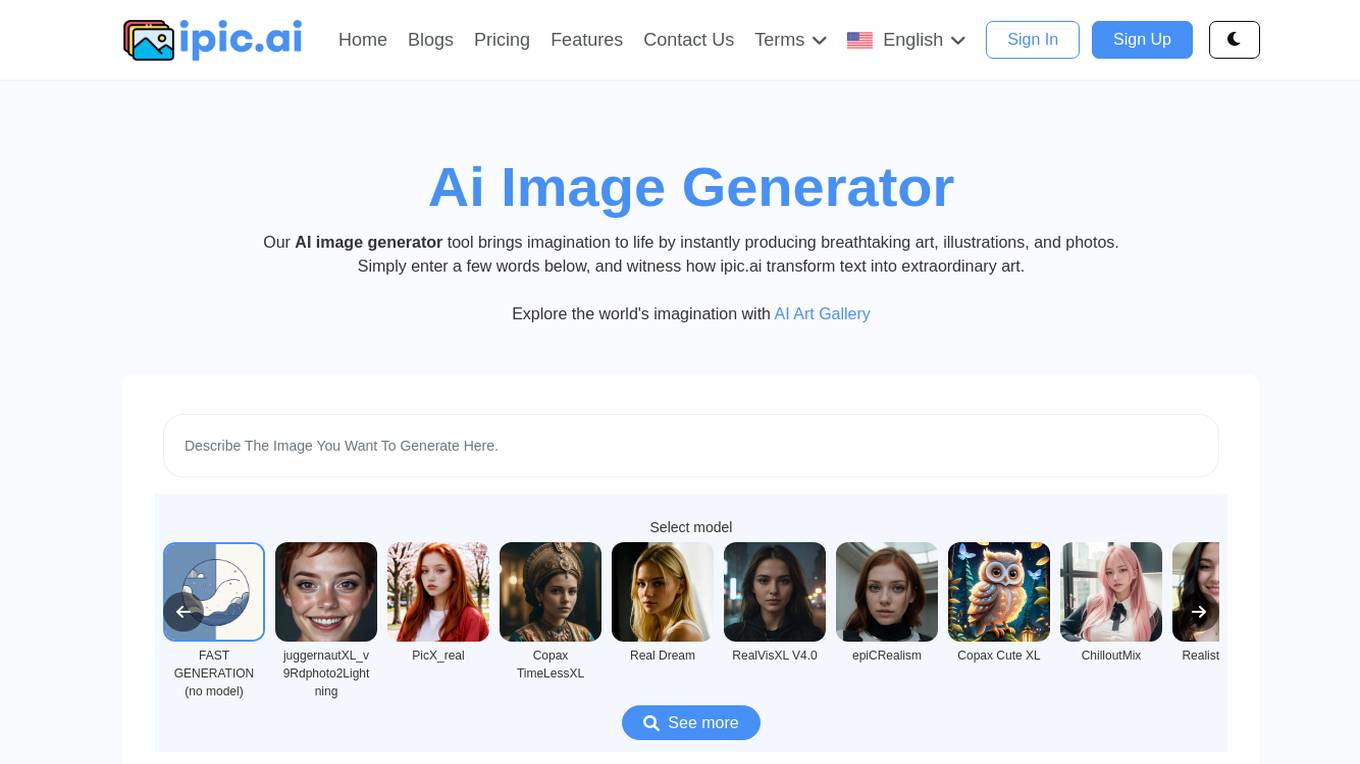
iPic.Ai
iPic.Ai is an AI-powered image generator tool that brings imagination to life by instantly producing breathtaking art, illustrations, and photos. Users can transform text into extraordinary art by entering a few words and exploring the world's imagination with the AI Art Gallery. The platform offers a variety of models for fast generation and allows users to generate high-quality and unique images for various purposes such as marketing campaigns, website banners, or social media content. iPic.Ai utilizes deep learning techniques like generative adversarial networks (GANs) to create realistic and coherent images from scratch, catering to diverse applications in entertainment, design, advertising, and medical research.
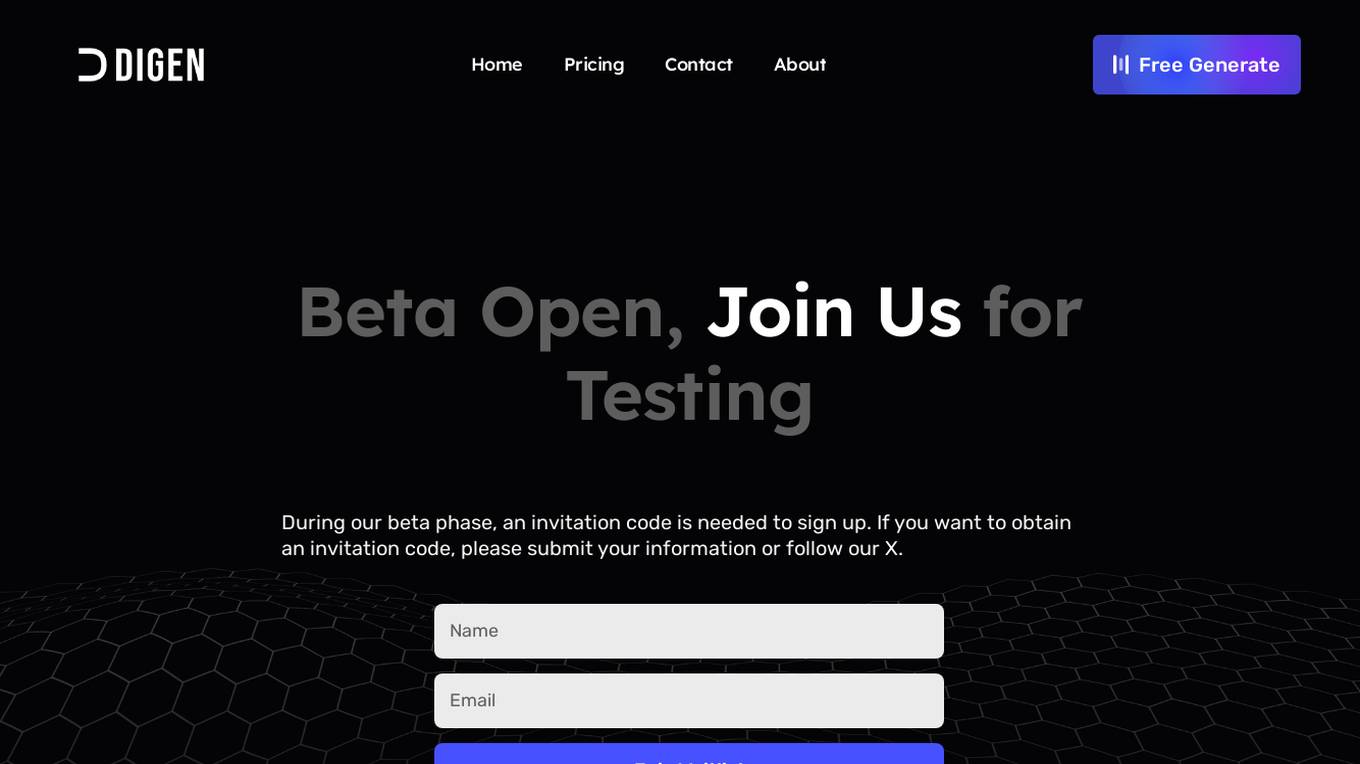
DigenAI
DigenAI is an AI creation platform based on generative avatars. It allows users to create realistic, AI-generated avatars that can be used for a variety of purposes, such as marketing, customer service, and education. DigenAI's avatars are created using a combination of deep learning and generative adversarial networks (GANs), and they are designed to be both visually appealing and emotionally engaging.

Supermodel
Supermodel is an AI-powered platform that allows users to create realistic AI influencers. With Supermodel, users can choose from a variety of options to create their own unique AI character. Users can also use pre-made prompts to generate social media posts and images. Supermodel is powered by a variety of AI technologies, including generative adversarial networks (GANs) and natural language processing (NLP).
1 - Open Source Tools
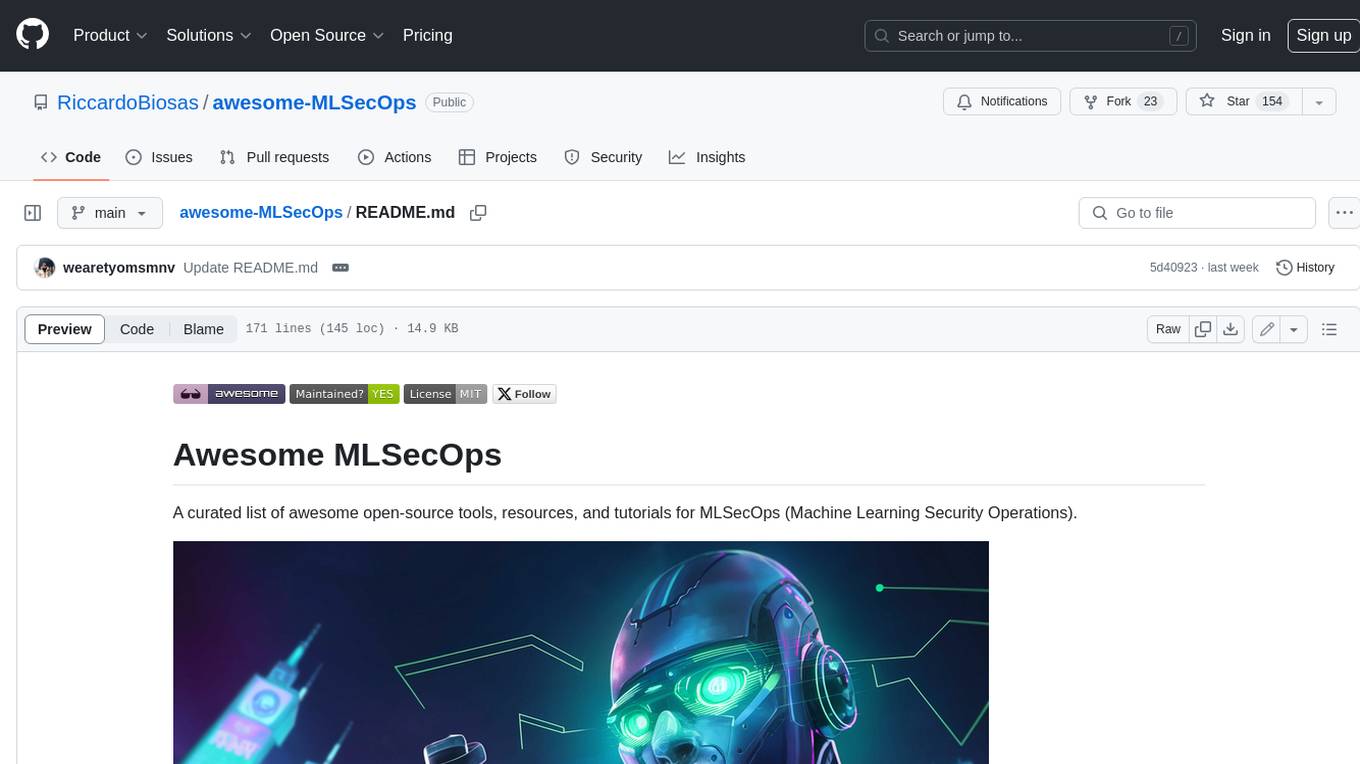
awesome-MLSecOps
Awesome MLSecOps is a curated list of open-source tools, resources, and tutorials for MLSecOps (Machine Learning Security Operations). It includes a wide range of security tools and libraries for protecting machine learning models against adversarial attacks, as well as resources for AI security, data anonymization, model security, and more. The repository aims to provide a comprehensive collection of tools and information to help users secure their machine learning systems and infrastructure.
1 - OpenAI Gpts
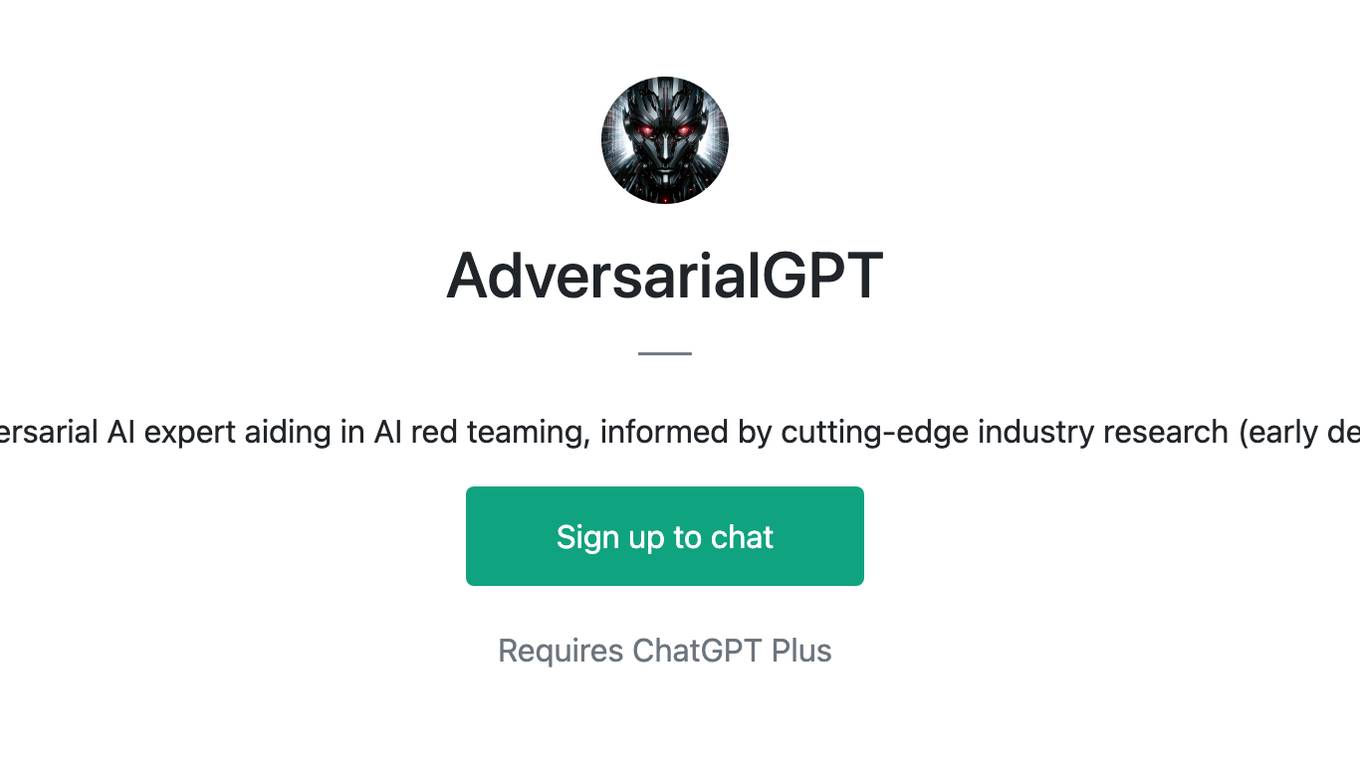
AdversarialGPT
Adversarial AI expert aiding in AI red teaming, informed by cutting-edge industry research (early dev)